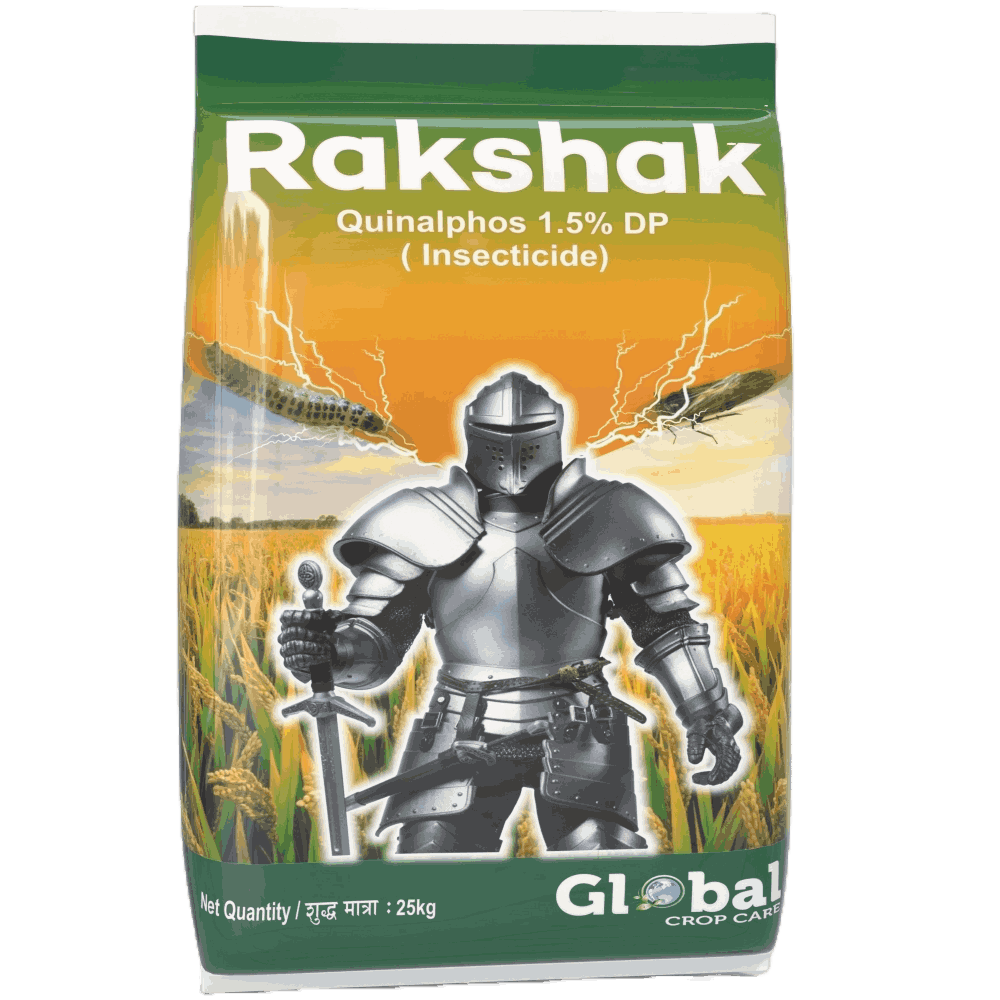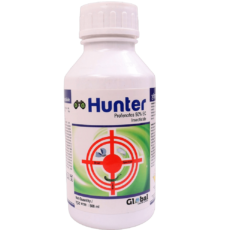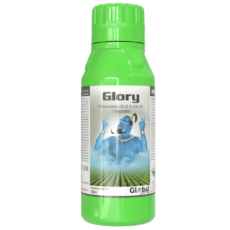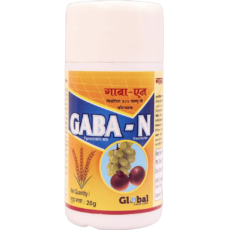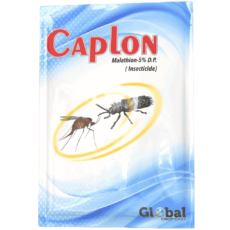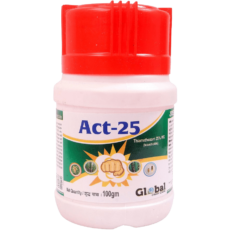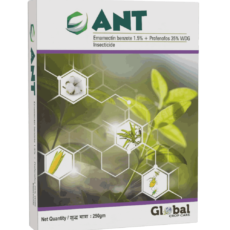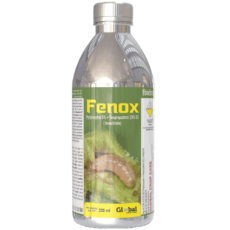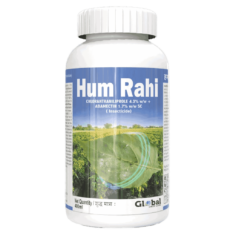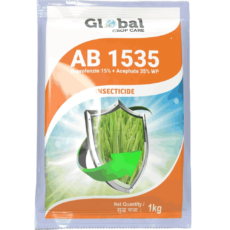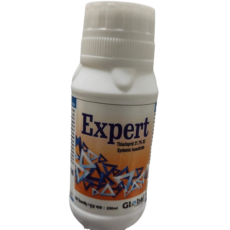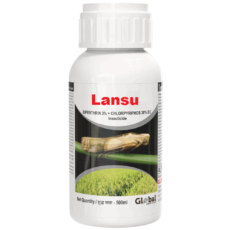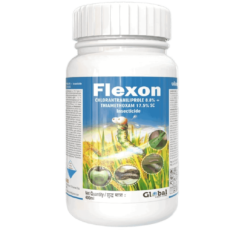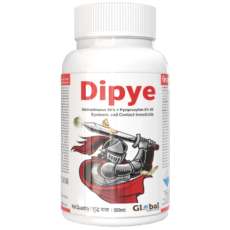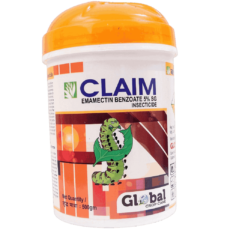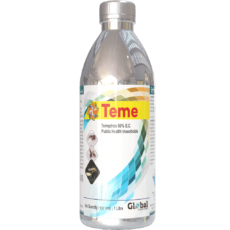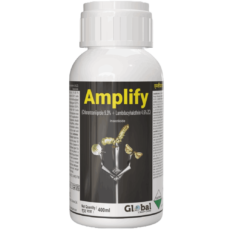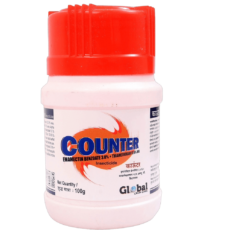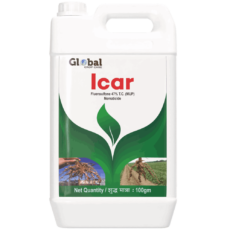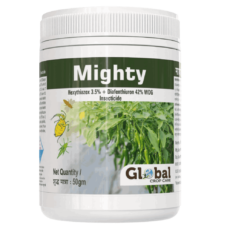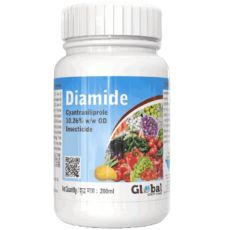Description
| Crop(s) | Common Name of Pest | Dosage/HA | Dilution in Water (lts) | Waiting Period between last spray to harvest (days) | |
| AI (gms) | Formulation (gms) | ||||
| Chillies | Aphid | 300 | 20 | – | – |
| paddy | Brown plant hopper | 300 | 20 | – | 40 |
| Red gram | pod borer | 350 | 23.3 at pod formation | – | 30 |
Rakshak, Quinalphos 1.5% DP, is a contact and stomach poisonous Insecticide dusting powder formulation based on Quinalphos technical. *Caution : Toxic to aquatic organisms hence should not be used near water bodies, aquaculture or pisciculture. It is toxic to honeybees, spray application should be avoided during foraging period of bees. Product is highly toxic to birds hence avoid use near bird habitat.
| Direction of Use |
| P.P. Equipment:- Knapsack bellow duster, manually operated rotary duster, motorised knapsack sprayer cum duster. |
| Time of Application |
| – |
| Precaution |
| 1. Keep away from foodstuffs, empty foodstuff containers and animals food. 2. Avoid contact with mouth, eyes and skin. 3. Avoid inhalation the dust particles. Dust in the direction of wind. 4 . Wash thoroughly the contaminated clothes and parts of the body after dusting. 5. Do not smoke, drink, eat and chew anything while dusting. 6. Wear full protective clothing while dusting. |
| Symptoms Of Poisoning |
| Headache, giddiness, vertigo,nausea, vomiting, blurred vision, sweating,excessive lacrimation, diarrhoea salivation and convulsion may occur. |
| First Aid |
| 1. If swallowed, induce vomiting by tickling the back of throat. Repeat it until the vomitus is clear. Do not induce vomiting if the patient is unconscious. 2. If clothing and skin are contaminated, remove the clothes and wash the contaminated skin with copious amount of soap and water. 3. If eyes are contaiminated, flush with plenty of saline/clean water for about 10 to 15 minutes. 4. If inhaled, remove the patient to fresh air. |
| Phytotoxicity |
| The product is not phytotoxic when used as per field recommendation. |
| Antidote |
| 1. Atropinize the patient immediately and maintain full atropinization by repeated doses of 2 to 4 mg. of atropine sulphate intravenously at 5 to 10 minutes interval. As much as 25 to 50 mg. of atropine may be required in a day. The need for further atropine administration is guided by the continuance of symptoms. Extent of salivation is a useful criterion for dose adjustment. 2. Dissolve 1-2 gm of 2 PAM in 10 ml distilled water and inject intravenously very slowly for 10-15 minutes |
| Disposal Of Used Container |
| | 1.It shall be the duty of manufactures formulators and operator to dispose packages or surplus materials and washings from the machine and container shall be disposed off in a safe manner so as to prevent environmental and water. pollution. | 2.The used packages shall not be left outside to prevent their re-use. | 3.Packages shall be broken and burried away from habitation. |
| Storage Conditions |
| | 1. The packages containing the insecticide shall be stored in separate rooms or premises away from the rooms or premises used for storing other articles particularly articles of or shall be kept in separate almirahs under lock and key depend upon the quantity and nature of the insecticide | 2. The rooms or premises meant for storing the insecticide shall be well built, dry, well-lit and ventilated and of sufficient dimensions |

